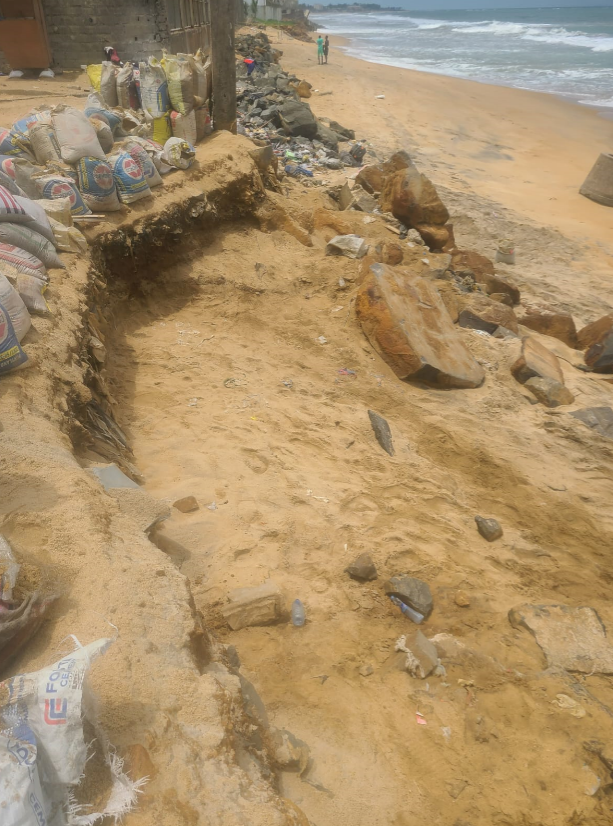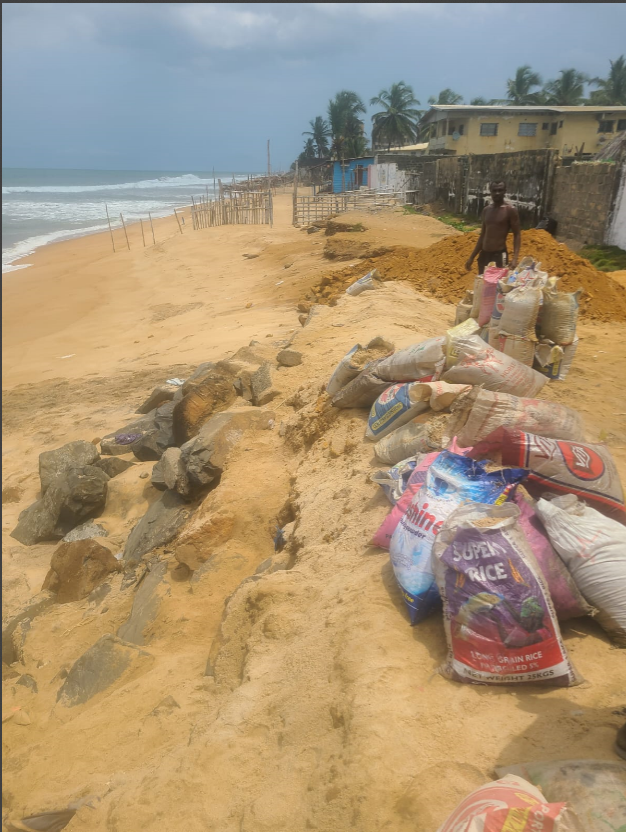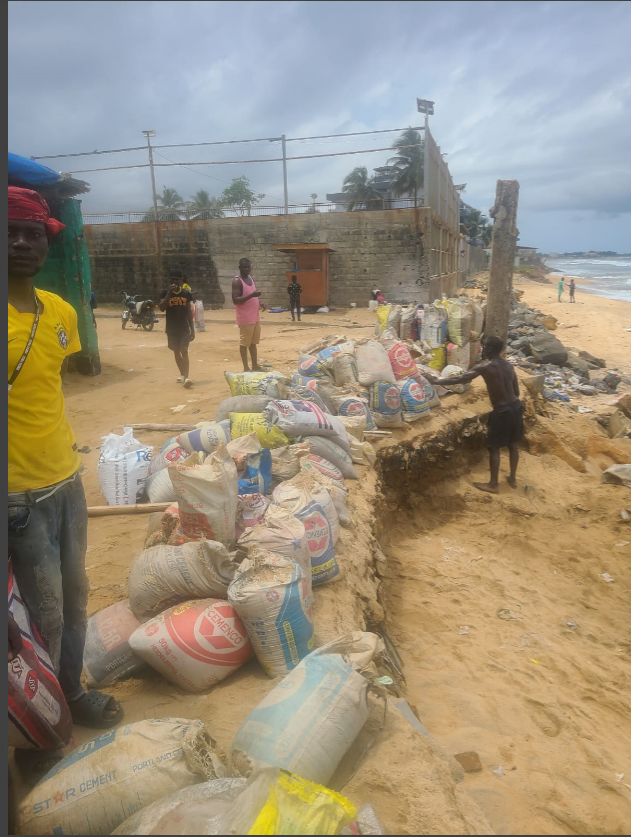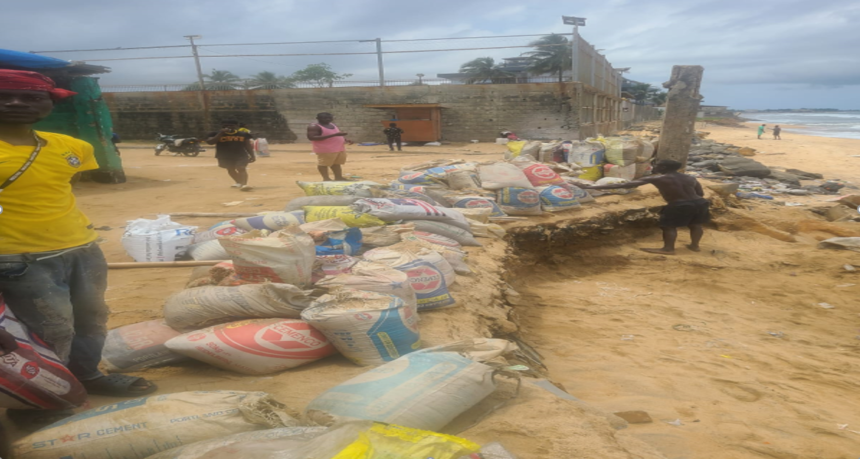By Lamin Guèye
Monrovia, Liberia – The scenic oceanfront of Monrovia, the capital of Liberia, is facing a critical threat from indiscriminate and uncontrolled sand mining, jeopardizing property, disrupting livelihoods, and contributing to severe environmental degradation. From Mamba Point, encompassing areas near prominent hotels, to the Congo Town vicinity, a daily influx of hundreds of individuals, primarily young men and women, are extracting sand from the beaches, fueling concerns about the city’s future.
This sand is collected in 100-pound bags and sold for approximately $100 Liberian dollars to truckers and individuals with pickups, who then act as intermediaries, transporting the resource to construction sites across the city. However, this seemingly benign economic activity is having a devastating impact on Monrovia’s coastline.
The most severely affected area is the 11th Street beachfront behind the Ocean Eleven resort. Here, the relentless removal of sand is putting numerous properties at imminent risk of destruction. Experts warn that if this trend continues unabated, valuable infrastructure, including the Libyan-Liberian Holding Plaza which houses the United Nations Operations in Liberia (UNMIL), the Ministry of Foreign Affairs, the Ministry of Internal Affairs, the Executive Mansion, the John F. Kennedy Medical Center, and other crucial city infrastructure, could be jeopardized.
“The level of mining going on risks sinking vital infrastructure,” warned a concerned environmental advocate. “We are witnessing the gradual erosion of our coastline, and the consequences could be catastrophic.”
Sand mining significantly impacts coastal communities through a cascade of negative effects. The extraction process causes infrastructure damage, including flooding and damage to roads and bridges. It also leads to water contamination and exacerbates erosion, impacting the safety and well-being of communities. Furthermore, changes in river morphology and riverbank erosion directly threaten homes and buildings.
The current activities of sand miners, particularly around the Sinkor community, have left Monrovia vulnerable to increased erosion, saline water intrusion into precious water wells, water quality degradation, coastal erosion, and the loss of vital dune protection.
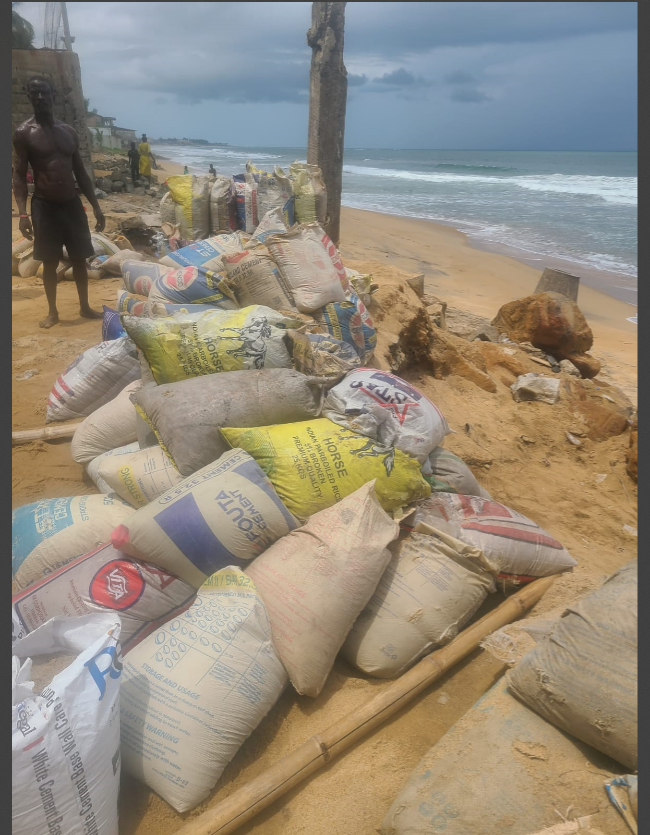
Sea erosion, the gradual wearing away of coastlines by the relentless force of the sea, carries significant social, economic, and environmental consequences. It not only erodes natural habitats and reduces biodiversity but also increases the risk of flooding and devastating storm surges.
The social impacts of this uncontrolled mining are particularly worrying. The potential for loss of property and infrastructure looms large, as homes, businesses, and other structures are increasingly vulnerable to collapse. This erosion can force communities to relocate, disrupting lives and social structures. The thriving tourism industry, a vital source of revenue and jobs, is also threatened as the sand mining and coastal erosion damage beaches and other tourist attractions.
Recognizing the urgency of the situation, the city government of Monrovia under the leadership and guidance of Mayor John Charuk Siafa is reportedly planning to implement comprehensive strategies to address the problem and find sustainable solutions.
The City Manager of Monrovia, Jones N. Williams, recommends a multi-faceted approach that includes:
- Regulation and Enforcement: Implementing strong regulations and robust enforcement mechanisms to control sand mining activities and ensure they are conducted sustainably.
- Community Involvement: Engaging local communities along the beachfront areas in decision-making processes related to coastal protection to ensure their needs and concerns are addressed effectively.
- Alternative Livelihoods: Supporting alternative livelihoods for the unemployed young people who currently depend on sand mining to reduce their reliance on this unsustainable practice.
Addressing the impact of sand mining along Monrovia’s beaches is crucial for protecting the environment, safeguarding livelihoods, and ensuring the long-term well-being of coastal communities. Failure to act decisively will lead to further degradation of the coastline and potentially irreversible damage to vital infrastructure and the city’s economy.
In addition to the indiscriminate sand mining, climate change is having a devastating impact on the city’s oceanfront through global warming, acidification, and changes in oxygen levels, affecting marine life, ecosystems, and coastal communities. The ocean is absorbing a large amount of excess heat and carbon dioxide, leading to rising sea levels, more intense marine heatwaves, and potentially harmful shifts in marine habitats and food webs along the city’s coastline.
